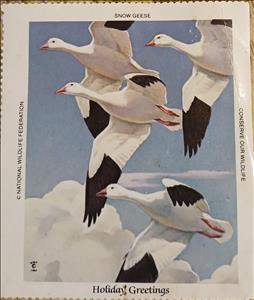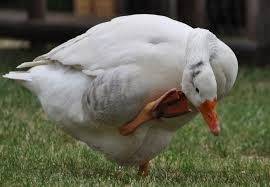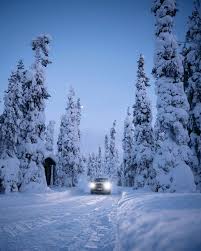Stamp: Snow Geese (United States of America 1993)
Snow Geese (United States of America 1993)
01 January (United States of America ) within release National Wildlife Federation goes into circulation Stamp Snow Geese face value None No Face Value
| Stamp Snow Geese in catalogues | |
|---|---|
| Colnect codes: | Col: US-WF 1993-01 |
Stamp is square format.
Also in the issue National Wildlife Federation:
- Stamp - Snow Geese face value None;
- Stamp - Blue-gray gnatcatcher face value None;
- Stamp - Bob white face value None;
- Stamp - Ermine face value None;
- Stamp - Mountain goat face value None;
- Full Pane - National Wildlife Federation Christmas stamps 1993 face value None;
- Stamp - Snow goose face value None;
- Stamp - White-tailed deer face value None;
|
Data entry completed
50%
|
|
|---|---|
| Stamp Snow Geese in digits | |
| Country: | United States of America |
| Date: | 1993-01-01 |
| Print: | Offset lithography |
| Emission: | Cinderella |
| Format: | Stamp |
| Face Value: | None No Face Value |
Stamp Snow Geese it reflects the thematic directions:
Birds (Aves), a subgroup of Reptiles, are the last living examples of Dinosaurs. They are a group of endothermic vertebrates, characterised by feathers, toothless beaked jaws, the laying of hard-shelled eggs, a high metabolic rate, a four-chambered heart, and a strong yet lightweight skeleton. Birds live worldwide and range in size from the 5 cm (2 in) bee hummingbird to the 2.75 m (9 ft) ostrich. They rank as the class of tetrapods with the most living species, at approximately ten thousand, with more than half of these being passerines, sometimes known as perching birds. Birds are the closest living relatives of crocodilians.
A goose (pl.: geese) is a bird of any of several waterfowl species in the family Anatidae. This group comprises the genera Anser (grey geese and white geese) and Branta (black geese). Some members of the Tadorninae subfamily (e.g., Egyptian goose, Orinoco goose) are commonly called geese, but are not considered "True Geese" taxonomically. More distantly related members of the family Anatidae are swans, most of which are larger than true geese, and ducks, which are smaller.
Snow comprises individual ice crystals that grow while suspended in the atmosphere—usually within clouds—and then fall, accumulating on the ground where they undergo further changes. It consists of frozen crystalline water throughout its life cycle, starting when, under suitable conditions, the ice crystals form in the atmosphere, increase to millimeter size, precipitate and accumulate on surfaces, then metamorphose in place, and ultimately melt, slide or sublimate away.



